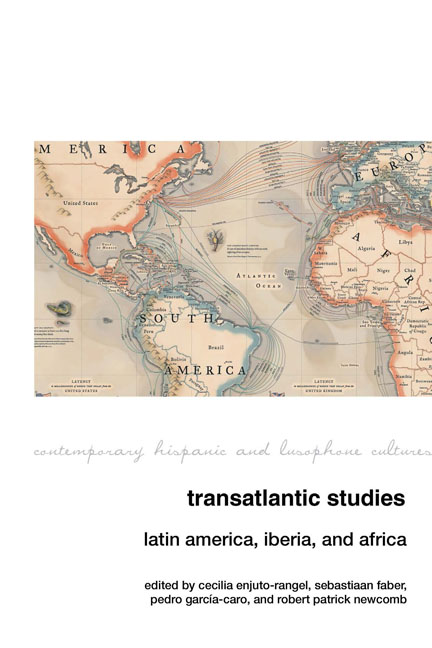Book contents
- Frontmatter
- Contents
- Introduction: Transatlantic Studies: Staking Out the Field
- Transatlantic Methodologies
- Transatlantic Linguistic Debates
- Transatlantic Displacement
- Transatlantic Memory
- Transatlantic Postcolonial Affinities
- Transatlantic Influence
- Epilogue: The Futureâif There Is OneâIs Transatlantic
- Index
9 - Linguistic Histories and the Role of Transatlanticity
- Frontmatter
- Contents
- Introduction: Transatlantic Studies: Staking Out the Field
- Transatlantic Methodologies
- Transatlantic Linguistic Debates
- Transatlantic Displacement
- Transatlantic Memory
- Transatlantic Postcolonial Affinities
- Transatlantic Influence
- Epilogue: The Futureâif There Is OneâIs Transatlantic
- Index
Summary
History and Language: Old and New Articulations
Conventional narratives of the history of Spanish are grounded in specific conceptualizations of history and language that end up producing specific types of textual arrangements. First, these narratives are constructed on the basis of a strictly chronological understanding of historicity by virtue of which events are deemed to be historical if they happened in “the past” (whose identity vis-à-vis “the present” is rarely discussed) and the language’s history is told as a series of chronologically organized grammars linked by the sets of formal changes that led to the evolution from one to the next. Second, they rely on a reified vision of language, that is, on a conception of Spanish as a discrete and discernible linguistic object amenable to scientific observation. The history of Spanish will typically be told in this tradition as, first, a description of the grammar of Latin and the phonetic and morphosyntactic changes that turned it into Ibero-Romance; this will in turn be followed by the changes that produced the grammar of Old Spanish and, finally, the set of rules that resulted in the formation of Modern Spanish. More or less attention can be paid to the cultural, political, or social conditions prevalent in each period, but the chronological grid always structures the historicity of the tale and the formal aspects of the language’s evolution remain at the center (classic studies that, by and large, reproduce the described pattern are Lapesa (1981) and Menendez Pidal (1904); a more contemporary manifestation of this tradition is Fradejas Rueda (2000) and, in the Anglo-Saxon world, Lathrop (1996) and Pharies (2007)).
Within this framework, the language's transatlantic dimension is associated with its spread throughout the Americas, located within the modern phase of its history and represented as no more than the development of certain dialectal features that minimally differentiate the varieties spoken in the Americas from those of the Iberian Peninsula. Spanish's transatlantic condition is therefore deemed to be of secondary importance (and is actually rendered of secondary importance) since, firstly, it is noted to have emerged after the language had already been constituted as such and, secondly, it is placed in a peripheral position within the textual materialization of the narrative.
- Type
- Chapter
- Information
- Transatlantic StudiesLatin America, Iberia, and Africa, pp. 117 - 125Publisher: Liverpool University PressPrint publication year: 2019



